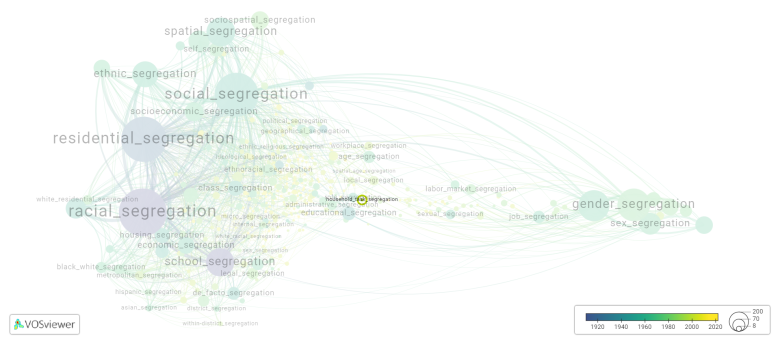Household task segregation: Difference between revisions
(Creating page) |
(Creating page) |
||
| (4 intermediate revisions by the same user not shown) | |||
| Line 11: | Line 11: | ||
Overcoming household task segregation requires a shift in attitudes and norms regarding gender roles and an equal sharing of household responsibilities. This can entail promoting open communication and negotiation between partners, as well as challenging assumptions about gendered tasks and the value of domestic labor. It is important to recognize that both men and women are equally capable of performing all types of household tasks and that a fair and equitable distribution of chores can contribute to healthier and happier relationships. | Overcoming household task segregation requires a shift in attitudes and norms regarding gender roles and an equal sharing of household responsibilities. This can entail promoting open communication and negotiation between partners, as well as challenging assumptions about gendered tasks and the value of domestic labor. It is important to recognize that both men and women are equally capable of performing all types of household tasks and that a fair and equitable distribution of chores can contribute to healthier and happier relationships. | ||
==== | ==See also== | ||
==Related segregation forms== | |||
Household task segregation is frequently discussed in the literature with the following segregation forms: | |||
[[sex segregation]] | |||
[[File:household_task_segregation.png|780x780px]] | |||
This visualization is based on the study [[Segregation_Wiki:About| The Multidisciplinary Landscape of Segregation Research]]. | |||
For the complete network of interrelated segregation forms, please refer to: | |||
* [https://tinyurl.com/2235lkhw First year of publication] | |||
* [https://tinyurl.com/2d8wg5n3 Louvain clusters] | |||
* [https://tinyurl.com/223udk5r Betweenness centrality] | |||
* [https://tinyurl.com/244d8unz Disciplines in which segregation forms first emerged (Scopus database).] | |||
==References== | ==References== | ||
==Notes== | ==Notes== | ||
<references /> | <references /> | ||
{{NoteAI}} | {{NoteAI}} | ||
==Household | ==Household task segregation appears in the following literature== | ||
Hook J.L. ( | Hook J.L. (201). Gender inequality in the welfare state: Sex segregation in housework, 1965 2003. ''American Journal of Sociology'', ''115''(5), 1480-1523. University of Chicago Press.https://doi.org/10.1086/651384 | ||
Latest revision as of 07:17, 16 October 2024
Date and country of first publication[1][edit | edit source]
2010
United States
Definition[edit | edit source]
Household task segregation refers to the division of household tasks and responsibilities based on gender. Traditionally, certain tasks such as cooking, cleaning, and caring for children have been assigned to women, while tasks like home repairs, yard work, and paying bills have been assigned to men.
This division of labor based on gender often reinforces gender roles and stereotypes within the household. It can result in women having a disproportionate workload and being responsible for the majority of domestic labor, while men are not equally engaged in household chores or child-rearing.
Household task segregation can have negative implications for gender equality and women's empowerment. It can limit women's opportunities for education, career advancement, and personal fulfillment, as they find themselves burdened with the responsibilities of maintaining the household.
Overcoming household task segregation requires a shift in attitudes and norms regarding gender roles and an equal sharing of household responsibilities. This can entail promoting open communication and negotiation between partners, as well as challenging assumptions about gendered tasks and the value of domestic labor. It is important to recognize that both men and women are equally capable of performing all types of household tasks and that a fair and equitable distribution of chores can contribute to healthier and happier relationships.
See also[edit | edit source]
Related segregation forms[edit | edit source]
Household task segregation is frequently discussed in the literature with the following segregation forms:
This visualization is based on the study The Multidisciplinary Landscape of Segregation Research.
For the complete network of interrelated segregation forms, please refer to:
References[edit | edit source]
Notes[edit | edit source]
- ↑ Date and country of first publication as informed by the Scopus database (December 2023).
At its current state, this definition has been generated by a Large Language Model (LLM) so far without review by an independent researcher or a member of the curating team of segregation experts that keep the Segregation Wiki online. While we strive for accuracy, we cannot guarantee its reliability, completeness and timeliness. Please use this content with caution and verify information as needed. Also, feel free to improve on the definition as you see fit, including the use of references and other informational resources. We value your input in enhancing the quality and accuracy of the definitions of segregation forms collectively offered in the Segregation Wiki ©.
Household task segregation appears in the following literature[edit | edit source]
Hook J.L. (201). Gender inequality in the welfare state: Sex segregation in housework, 1965 2003. American Journal of Sociology, 115(5), 1480-1523. University of Chicago Press.https://doi.org/10.1086/651384

